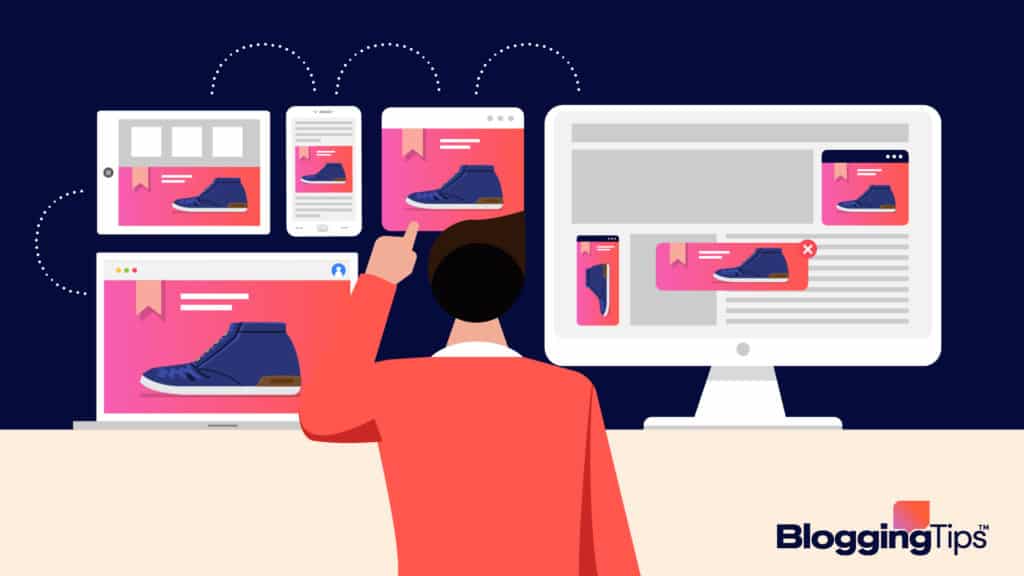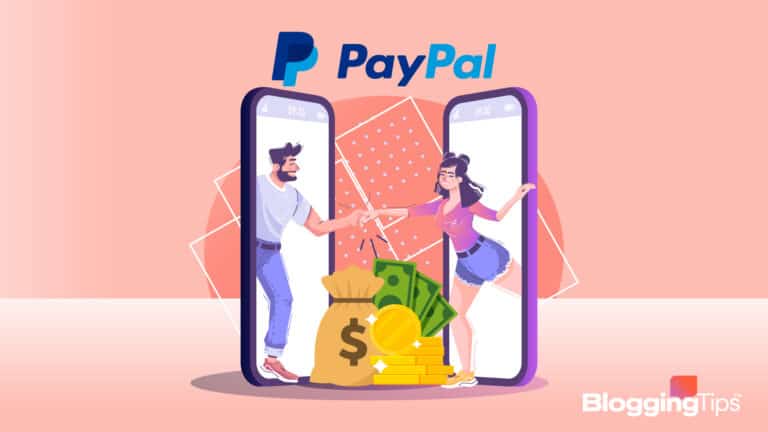Digital ad use has only gone up over the years.
Even during some of the lowest points the Western economy experienced in recent years, ad spending has gone up by double digits year over year.
With the number of people and businesses using ads to promote their products, one of the first details you’ll need to establish is the size of the ads on the page.
Let’s take a look at how the standard banner advertising sizes you see on web pages and applications impact their success during an ad campaign.
What Is Banner Advertising?
Banner advertising refers to the use of animated pictures or graphics to advertise a product or service online.
These banners run across the webpage itself or sit off to the side as a static ad.
Generally, these banners show up on popular web pages or websites to attract more potential customers.
Banner advertising is meant to work just like traditional advertising on platforms television or the radio.
However, instead of paying for a slot on the network, advertisers pay the website based on the number of clicks the ad gets.
The more people click through the ad, the more money the website receives for hosting the banner ad in the first place.
Over time, banner advertising expanded to include more than just banner ads on a webpage.
Platforms like Twitter and Facebook have made business models out of selling ad space on their platforms, essentially offering advertisers access to some of the larger groups of people on the Internet.
Did You Know?
When learning how to monetize a blog, you’ll find that this is oftentimes the easiest and low-hassle way to start making money with your traffic.
What Is Display Advertising?
Display advertising is another term for banner advertising in most cases.
However, display advertising can refer to more than just static banner ads on the screen.
Display advertising can include more dynamic ads, such as:
- Remarketing ads that offer products or services someone would want, based on their previous purchases.
- Personalized ads based on information provided to the website, such as location, age, gender, or browsing habits.
- Targeted ads that will appear when specific keywords get searched or when a language or location preference is set in the web browser.
How Does Banner Advertising Work?
Banner advertising allows a business to build its brand awareness over time.
By using the lower cost per ad online, a company can create more instances of someone seeing their brand name online than if the person walked by billboards or read a magazine.
Overall, the goal of a banner ad is to create an ad impression for the target recipient.
Impressions refer to the payment of the business to the host in exchange for hosting the ad.
The more impressions a company pays out, the more people clicked through the ad to see the product or service.
Some businesses also pay out more for impressions that lead to a sale.
This system incentivizes the hosting website to create ways to distribute ads to an audience that’s more likely to click on the ad and buy something.
In turn, this leads to the personalized advertising strategies some platforms use when filling banner ads.
Why Use a Banner Ad?
While banners are not the only way to get attention for your business, they are still one of the most effective ways online for these reasons:
1. Get People’s Attention
There are many different display ad sizes, meaning you have options to get people’s attention.
Outside of standard banner advertising sizes, using color, animation, or catchy sayings can draw the eye over to the ad and encourage more people to click through to the sale page.
2. Drive Traffic
With the right banner ad size, you can encourage people to come to your business’s website.
As more people visit the website, search engines take note of this traffic and make your business more likely to show up in search results for keywords in related posts.
The increased traffic can mean increased sales, thanks to the ad impressions!
3. Sell Products Online
As we mentioned, the point of advertising is to tell people about what your business offers so you can increase sales.
Banner ads help with sales by putting your products right in front of a customer’s face from anywhere.
You can also include other helpful design choices, like animated graphics or the addition of text, to explain to the reader why they should come to check out your product further.
4. Advertise Sales and Promotions
Finally, sales and promotions do well when paired with a display ad campaign.
These campaigns can make it clear to people who are used to seeing your ads that something different is going on.
Plus, you can use the ad as a way to link to the sale page or promotional content, making it easy for readers to find your new options.
Standard Banner Advertising Sizes
Let us take a look at the standard banner advertising sizes and where they excel.

1. Medium Rectangle Ad Size
Great for both small webpage and mobile device ad use, display ad sizes create several great uses.
In Inches
Assuming there are 100 pixels per inch for most desktop monitors and mobile devices, medium rectangle display ads are three inches by two-and-a-half inches.
In Pixels
Medium rectangle ads have a display size of 300 by 250 pixels.
What It Looks Like
These ads look like a somewhat squat rectangle embedded on the screen somewhere.
Since they are small, they don’t take up much space on the screen, making them feel smaller and discreet compared to other banner ad sizes.
When It’s Used
In general, medium rectangle ads are best for sidebars or for breaking up larger content or articles on a webpage.
The small size of the ad keeps the advertisement from being intrusive while also acting as a way to keep the webpage varied and keep the reader continuing through the piece.
Medium rectangle ads are also a great place to start when designing ads for yourself initially.
The shape is easy to grasp, and with the small dimensions, you don’t have to fill as much space.
These also work well as mobile banner ads.
2. Leaderboard Ad Size
Another popular choice of standard banner advertising sizes is the leaderboard ad size, which works great for content you want to be prominent and at the top of your webpage.
In Inches
Leaderboard ads are 7.28 inches by 0.9 inches.
In Pixels
Usually, a leaderboard ad is 728 by 90 pixels.
What It Looks Like
Leaderboard ads are thin rectangle ads that sit at the top of the webpage.
These ads get their name from resembling the top portion of a leaderboard where the score is displayed.
When It’s Used
Because they are only 90 pixels tall, these ads aren’t great for displaying large graphics or running a compelling video clip.
Instead, leaderboard banner ads are great for displaying a notification or heads-up through some text.
Since these ads sit at the top of the page, they get their clicks from the being at the top of the page when the website loads.
These ads are one of the first things someone will see, meaning that they’re more likely to click the link.
3. Wide Skyscraper Ad Size
As one of the popular skyscraper ad formats, wide skyscraper ads are for sidebars looking to take up more space to display larger images or text fields for ads.
In Inches
Using 100 PPI, these ads are one inch by six inches in total.
In Pixels
Wide skyscraper ads are 160 pixels by 600 pixels.
What It Looks Like
Wide skyscraper ads look like tall and skinny rectangles running down the side of the webpage, usually the right-hand side.
These ads get their name from the building type of similar shape.
When It’s Used
Skyscraper banner sizes are good for desktop versions of websites.
The widescreen monitors most folks have today for their computers mean plenty of white space on the left and right sides while browsing the web.
Website designers use this otherwise free space to host ads and generate revenue.
When used, these ads work well with both pictures and text.
The ad-block is large enough to make most anything inside the ad visible.
The length of the ad makes it visible for multiple paragraphs, giving the reader more chances to get curious and click the ad.
4. Half Page Ad Size
While these ads don’t take up half the webpage, they offer plenty of space to communicate your message.
In Inches
With a 100 PPI monitor, a half-page ad runs three inches by six inches.
In Pixels
Half-page ads have a size of 300 pixels by 600 pixels.
What It Looks Like
Half-page ads will look like a broader version of the wide skyscraper.
These ads take up a large amount of space on the right-hand side of the screen and have enough space to display beautiful ad designs if desired.
When It’s Used
For creative marketers, a half-page banner ad is a big canvas ready for most anything.
Impressive graphics, compelling text, and other elements are possible when you buy and use a banner ad this size.
The potential creativity is also a problem, though.
Designs that work well for the smaller display ads won’t work here.
Plus, impressive designs take more work on a half-page ad than the smaller ad sizes.
How To Make a Banner Ad
With some of the popular standard banner advertising sizes covered, let’s look at how someone would go about making a banner ad for their business:
Step by Step Instructions
Most banner ads run through the Google Display Network, but the steps to set up their Responsive Banner Ads work similarly to other platforms.
Here is what you’ll need to do to get your ads up and running:
- Create a central message or theme you want to convey across your ads to keep a consistent brand voice.
- Come up with multiple designs for the same display ad to use during A/B testing.
- Go to Google Display Network and create an ad using the size that matches your ad designs.
- Add effects or extra visuals to your ads before publishing them to the network.
- Check your ad analytics over time to review things like costs and clicks.
Final Thoughts on Standard Banner Advertising Sizes
The size of your banner ad affects more than just the amount of a picture you’ll see in the advertisement.
The banner size also changes the intent of the ad or where you will place it on the screen.
By understanding these common types of banner ad sizes, you can focus your ad design on creating a collection of ads that cover various sizes while keeping your brand’s voice and theme consistent.







